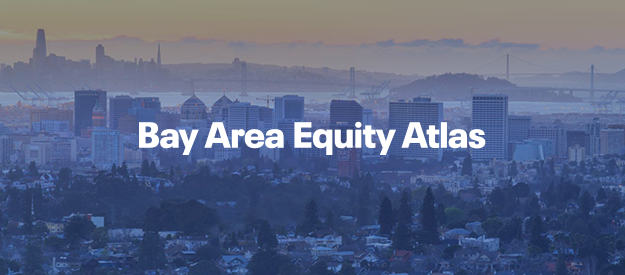People. Place. Power. These are the themes that came through loud and clear four years ago when we launched a project to listen to communities throughout the Bay Area. People told us they needed access to opportunities, a place to call home where they felt a sense of belonging, and political power to advance equitable policies. These needs became the pillars of the San Francisco Foundation’s commitment to equity.
Community organizers told us that they needed timely and reliable data to support equity campaigns. Despite having organizing power, campaign leaders struggled to find and disaggregate data to effectively convey the vast inequities in the region. It was based on that feedback that the idea for the Bay Area Equity Atlas first took hold. Over the past four years, we have worked closely with community leaders to develop a comprehensive and easy-to-use data and policy tool to help create a more equitable Bay Area.
Here are just a few examples of what the Bay Area Equity Atlas offers:
- Data: The Bay Area Equity Atlas analyzes data on income growth which illustrates the ways in which the region is experiencing an acceleration of the income inequality that is being seen across the nation. Between 2000 and 2015, full-time workers with the lowest earnings (at the 10th percentile) living in the Bay Area saw their incomes decline by 13 percent. The regional decline for the lowest paid workers was nearly twice that of the state average (seven percent). During the same period, top earners (at the 90th percentile) in the Bay Area saw their paychecks grow by 13 percent, which was nearly three times the state average (five percent).
- Stories: In additional to data, site users will also find stories that show how people’s lives are improved when they have greater opportunities. For example, San Jose resident Michael Skeeters participated in the Working Partnership’s Trades Orientation Program after serving an eight-year prison sentence. Because he had access to a good job, Michael now earns a living wage with benefits and a pension as a low-voltage electrician.
- Solutions: While some equity-oriented policies, such as fair scheduling, which provides workers with predictable and stable schedules, are still in early stages of adoption, other solutions, such increases to the minimum wage, are being implemented statewide and improved upon locally. The Bay Area Equity Atlas points to places where these solutions are already being put into practice, reminding users of California’s 2016 passage of SB3, which will result in a statewide minimum wage of $15 an hour by 2023. And beyond that, the Atlas showcases the 18 Bay Area cities have already adopted minimum wage laws that exceed that of the state.
These are just a few examples of the depth and power of the Bay Area Equity Atlas. We’re excited to see how this new tool will empower changemakers to move hearts and minds and help create a more equitable Bay Area where everyone can thrive.


